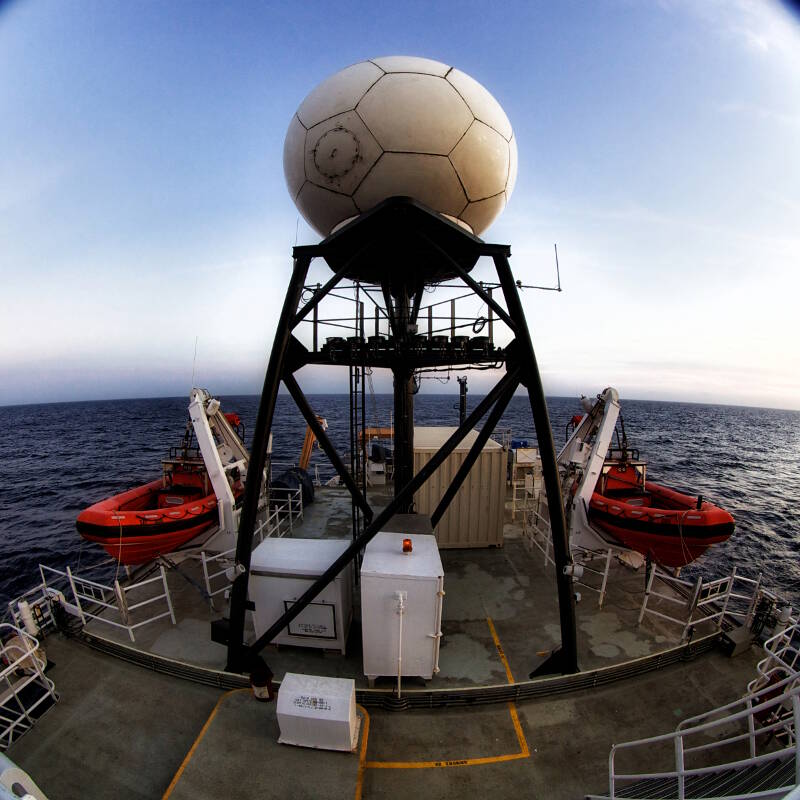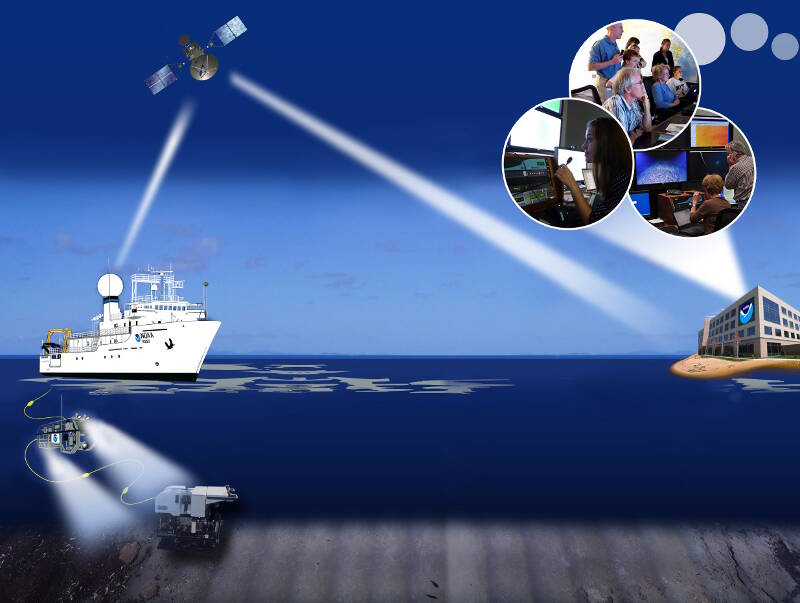
Brian Kennedy - NOAA Office of Ocean Exploration and Research
March 16, 2017
NOAA Ship Okeanos Explorer is dependent on satellites to allow us to share our dives live with the world.

The VSAT (large dome; stands for “Very Small Aperture Terminal”) is the critical piece of infrastructure that makes telepresence possible. Image courtesy of the NOAA Office of Ocean Exploration and Research, Deepwater Wonders of Wake. Download larger version (jpg, 4.1 MB).
We have a VSAT, or a very small aperture terminal, on the ship. This provides a direct line of communication to shore by bouncing a signal off a geosynchronous satellite that is 36,000 kilometers (23,300 miles) in orbit above the equator. Unlike the satellites you see moving through the night sky when you are stargazing, geosynchronous satellites orbit at a certain speed that maintains their position above the Earth, which makes it difficult to tell them apart from the stars.

These diagrams illustrate the flow of information from the seafloor and ultimately to viewers around the world. Images courtesy of the NOAA Office of Ocean Exploration and Research. Download top image larger version (jpg, 2.6 MB). Download bottom image larger version (jpg, 1.9 MB).
For the Okeanos Explorer satcom system to work, the ship’s VSAT has to remain pointed directly at the satellite. This requires the dish to move continuously to compensate for the movement of the ship as we heave, pitch, and roll. Despite this very impressive technology, every spring and fall, the ship still runs into a problem called “solar transit” or “sun fade.”
Every spring and fall near the equinoxes, the ship experiences a few days where the connection is lost to the satellite for a short period of time, due to the sun’s position. Since the geosynchronous satellites are right above the equator, the sun passes directly behind the satellite, which prevents us from communicating with it during that time.
No matter how powerful the radio signal is that the satellite sends to the ship, the sun is more powerful. So, when the sun appears behind the satellite relative to the ship’s tracking VSAT, the ship can’t stay locked on the satellite. For the Okeanos Explorer with its 2.4-meter VSAT, these outages are generally 10-20 minutes long.
While the outage normally occurs around noon local ship time, it is possible to have two outages a day because the teleport on shore that receives the data from the satellite can also be effected at a different time on the same day.
While there is not much we can do about preventing these outages, we can predict them very accurately. All you need to predict the timing of these sun fade events is the ship’s position, its location, and the size of your VSAT feed. Input this information into one of many online calculators, and poof—you know exactly when to expect the sun fade... and the live video to (temporarily) be unavailable.